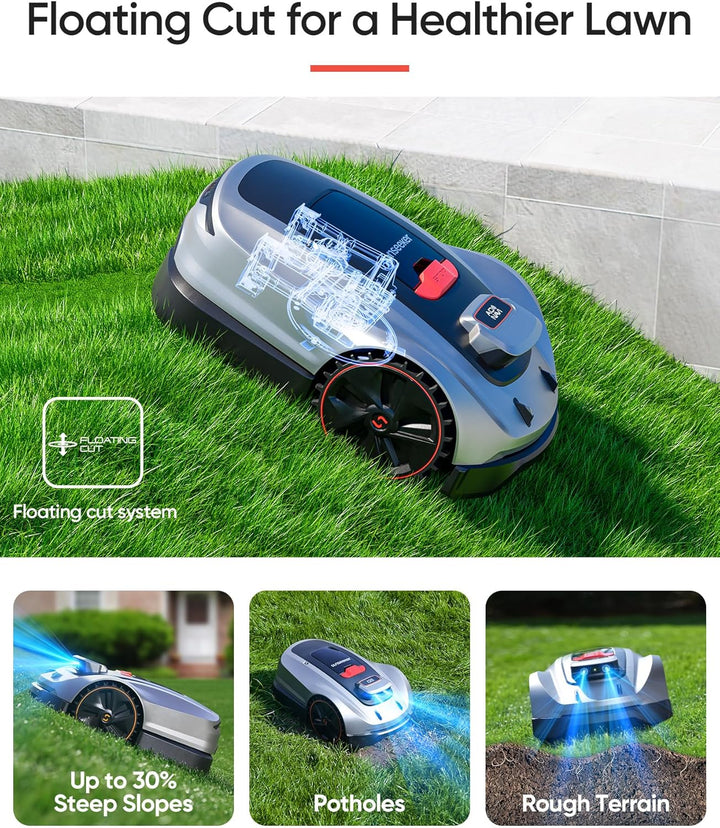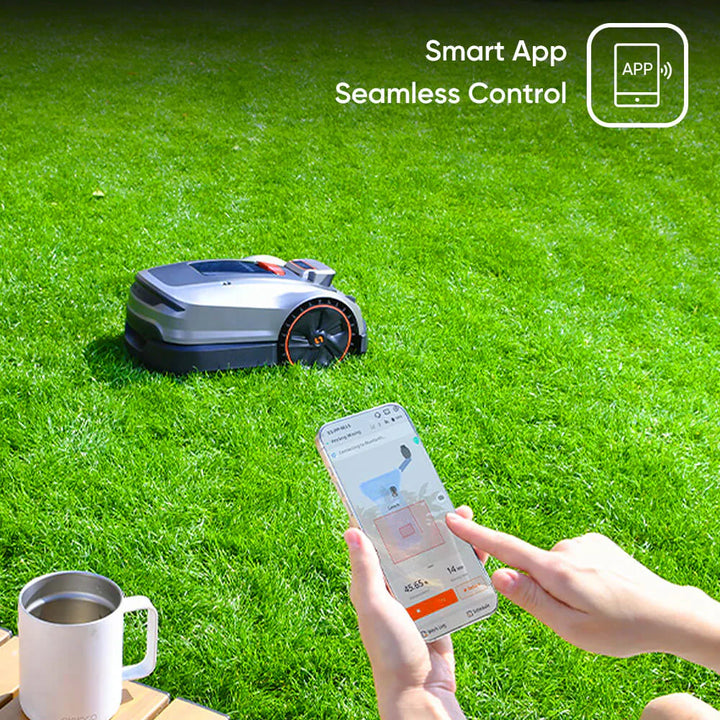Subscribe Our Newsletter
Robotic Lawn Mowers: How to Integrate Them into Your Smart Home Ecosystem
Your living room already has voice assistants, smart lights, and automations—so why not your lawn? A robotic lawn mower turns what used to be a noisy, sweaty weekend chore into quiet background automation. Instead of pushing a mower under the summer sun, you can let a compact machine glide across the grass while you relax. Connected to your smart home, an automated lawnmower can start on schedule, return to charge when finished, and even adjust its behavior to weather conditions. Models such as the Sunseeker V3 are built to make this integration as natural as adjusting your thermostat or dimming the lights with an app.
What “integration” really means
When we talk about integration, we mean more than just switching on a machine. The value comes from combining the mower’s features with the rest of your smart ecosystem.
One app, anywhere control
The Sunseeker Robot App is the central command. From your phone, you can check battery status, see whether the mower is working, start or stop a session, or send it back to its charging dock—all even when you’re not at home. Setup is simple: download the app, scan the mower’s serial number code, and connect it to your home Wi-Fi. Once paired, the Wi-Fi icon on both the robot and the app confirms the connection.
Schedules that adapt
Integration also means freedom from micro-managing. You can define mowing windows that fit your daily life and your neighbors’ routines. Morning, afternoon, or weekend slots are easy to configure. The app provides real-time updates, performance tracking, and maintenance alerts, and it can update the mower automatically through over-the-air firmware upgrades. These advanced features make the app an essential tool for keeping your lawn in top shape with minimal effort.
How to plug a robot mower into your smart home
Place the dock where Wi-Fi is strong. Treat the charging base like any smart device hub—reliable coverage equals reliable control. Platform V supports only 2.4GHz Wi-Fi networks, so make sure your router is compatible.
Join it to your home network via the companion app. Scan the serial number QR code, enter your Wi-Fi credentials, and give the mower a clear name (e.g., “Front-yard Mower”) so it’s easy to reference in routines. Once connected, you can remotely start or stop mowing, send the mower back to its charging station, adjust cutting height, or set schedules directly through the app. The connection also lets you monitor mowing progress in real time and receive error reports if something goes wrong.
Create a lawn-care schedule. Start with one or two runs per week, then fine-tune based on grass growth and noise preferences.
Buying (or upgrading) checklist
Yard size & terrain: Match the mower’s range and slope capability to your lawn.
- Sunseeker V3 (up to 0.15 acre / ~600 m²; V3 Plus up to 0.25 acre / ~1,000 m²): A great entry-level robot lawn mower for smaller urban or suburban yards. It uses binocular cameras with VSLAM for navigation (no perimeter wire needed), supports multi-zone mowing, and handles slopes up to about 22° (≈42%)—perfect if you want smart-home integration without overspending.
- Sunseeker X3 Plus (up to 0.3 acre / ~1,200 m²): A compact, wire-free option for small to mid-size lawns. It uses RTK-GNSS plus VSLAM (“AONavi”) for precise mapping, supports multi-zone management, and is rated to handle slopes around 30% (≈17°)—great for gently undulating yards.
- Sunseeker X5 (up to 0.5 acre / ~2,000 m²): Built for more complex terrain with all-wheel drive (AWD), floating cut, an 8.6-inch cutting width and adjustable height. It’s specified to tackle up to 60% (≈30°) slopes, making it a strong fit for mixed gradients and longer runs.
- Sunseeker Orion X7 (up to 0.75 acre / ~3,000 m²; X7 Plus up to 1.5 acre): A performance-oriented pick for larger properties. It combines RTK-GNSS with VSLAM, adds AWD, and is rated for slopes up to 70% (≈35°)—ideal if you have broad lawns, steeper banks, or complex edges.
Connectivity: Ensure dependable Wi-Fi in the docking area; consider a mesh node if needed for reliable app control and updates.
Ecosystem fit: Confirm your must-have integrations (voice control, routines, notifications) and name your mower clearly so it’s easy to reference in automations.
Support & updates: Look for active firmware updates, accessible support, and easy-to-find spare blades to keep ownership simple.
Safety, privacy, and good-neighbour etiquette
- Schedule sensibly: Midday or early-evening windows are polite for noise and visibility.
- Keep play areas clear: Automations that pause around motion ensure kid- and pet-friendly operation.
- Secure the app: Use strong passwords and two-factor authentication—treat control of your mower like any other smart-home device.
-
Data privacy: When connected to smart assistants or ecosystems, the mower may process personal information such as device names, pairing details, and actions triggered through the assistant. If you enable location-based services, your location may be used to provide weather-related functions, for example stopping mowing and returning to the charging station when rain is detected. Integration with third-party platforms can also involve sharing data according to their privacy policies.
The takeaway
An automated lawnmower is the missing link between your indoor convenience and outdoor curb appeal. Fold a robot lawn mower like the Sunseeker V3 into your smart home and your yard will practically manage itself: smarter schedules, easy remote control, and a lawn that looks cared-for—even when you’re busy.









